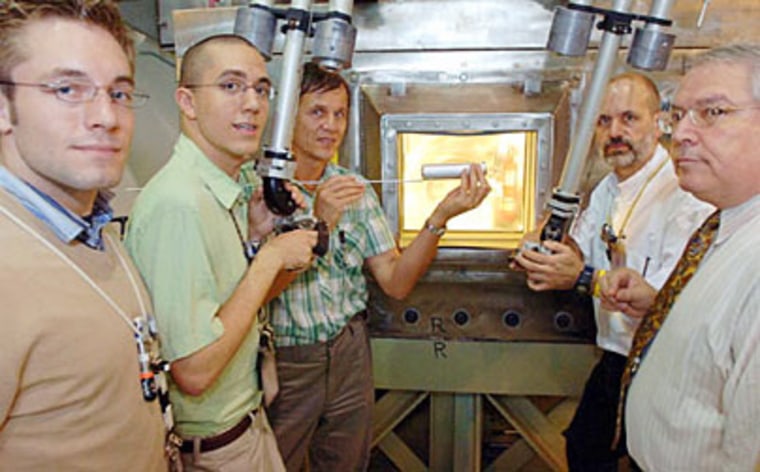Researchers have designed a reactor fuel that they believe can make nuclear power plants 50 percent more powerful and safer, the Massachusetts Institute of Technology said.
The researchers say their new technology should be ready for commercial use in existing reactors in about 10 years.
In a nuclear reactor, the fission of uranium atoms provides heat used to produce steam for generating electricity. Already, one pickup truck full of uranium fuel in a nuclear reactor can supply a city with enough electricity for a year. The MIT scientists believe they have found a way to make the fuel go even further, boosting output by about 50 percent.
Uranium fuel typically is formed into cylindrical ceramic pellets about a half-inch (1 centimeter) in diameter. The pellets look like a smooth, black version of food pellets for small animals.
Pavel Hejzlar and Mujid Kazimi of MIT recently completed a three-year project for the U.S. Department of Energy, along with scientists from Westinghouse and other companies. The researchers looked at how to make fuel for pressurized water reactors more efficient while maintaining safety margins.
About two-thirds of the 103 reactors operating in the United States are pressurized, using high pressure to prevent the water from boiling.
The scientists changed the shape of the fuel from solid cylinders to hollow tubes, adding surface area that allowed water to flow inside and outside the pellets, increasing heat transfer.
The new fuel design also is much safer because it reaches an operating temperature of about 1,300 degrees Fahrenheit (700 degrees Celsius), much lower than 3,270 degrees F (1,800 degrees C) for the conventional fuel and further from the fuel's melting point of 5,144 degrees F (2,840 degrees C).
Hejzlar, a principal research scientist in MIT’s Department of Nuclear Science and Engineering, said it could take up to 10 years to commercialize the new fuel concept.
Hejzlar did not have time to patent the concept before accepting more than $2 million in federal research money and publishing the results. He said several reactor manufacturers and utilities have expressed interest in the new fuel.
